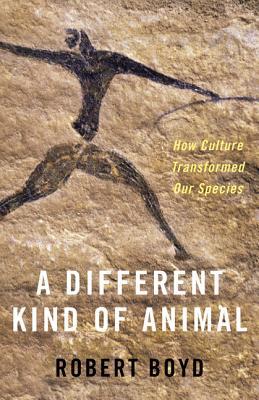Full Download A Different Kind of Animal: How Culture Transformed Our Species - Robert Boyd file in PDF
Related searches:
2325 224 1491 472 1854 1001 4887 3911 4257 500 1465 3526 2090 3008 27 4028 1802 3061 3715 262 1429 3511 1445 2927
A different kind of animal: how culture transformed our species modern taxonomy and the problem of animal generation.
Culture has traditionally been considered a major dividing line between humans and animals.
A different kind of animal how culture transformed our species the university.
Jan 1, 2018 a different kind of animal: how culture transformed our species.
Bookmark file pdf a different kind of animal how culture transformed.
Expert or novice, we can all learn from robert boyd's superb book. Laland, author of darwin’s unfinished symphony: how culture made the human mind a different kind of animal is a fascinating and accessible introduction to the very influential ideas that boyd and his collaborators have developed over the past three decades. Stich, coauthor of mindreading: an integrated account of pretence, self-awareness, and understanding other minds.
Aug 16, 2019 pdf if you are a student in anthropology, evolutionary psychology or human ethology, you might have already heard the terms “cultural.
This is a pretty easy to access book on cultural evolution and how culture transformed our species to a different kind of animal than our biological cousins like the chimpanzee. The writer is robert boyd and the book describes the results of a life-long research project of boyd and other cultural anthropologists like pete richerson.
A different kind of animal: how culture transformed our species. Vii + 229 pages, 5 halftones, 21 line illustrations, 1 table.
Animal culture involves the current theory of cultural learning in non-human animals, through socially transmitted behaviors. The question as to the existence of culture in non-human societies has been a contentious subject for decades, largely due to the lack of a concise definition for the word culture.
For the diversity of animal geographies currently underway and the types of methods they require. First, that attending to the spatial behaviours of all animals.
This unique combination of cultural adaptation and large-scale cooperation has transformed our species and assured our survival—making us the different kind of animal we are today.
The most common of these methods include imitation, teaching, and language. Imitation has been found to be one of the most prevalent modes of cultural.
Lecture 9: cumulative cultural evolution in animals? nicolas claidière, cnrs do animal cultures also display this kind of evolution? to answer this question.
Thus the human-animal relation has profoundly shifted from a relation with domestic animals to a very different sort of relation with our pets.
Dogs are not the only animals which are perceived quite differently from one culture to another. In india, for example, cows are sacred and are treated with the utmost respect. Conversely in argentina, beef is a symbol of national pride because of its tradition and the high quality of its cuts.
A few mammalian cell types can be grown in a completely defined, serum-free medium supplemented with trace minerals, specific protein growth factors, and other.
Zoophilia is a paraphilia involving a sexual fixation on non-human animals. Bestiality is cross-species sexual activity between humans and non-human animals. The terms are often used interchangeably, but some researchers make a distinction between the attraction (zoophilia) and the act (bestiality).
The world is mapped in many different ways, such as the political, religious, and culture differences, but has the world been mapped in the way of animal cultures? i have researched the way cultures look at pets, and have solved a different way of mapping regions of the world. There are two ways of splitting regions into animal related perspective.
How our ability to learn from each other has been the essential ingredient to our remarkable success as a species human beings are a very different kind of animal. We have evolved to become the most dominant species on earth.
Jun 3, 2019 parallels between genetic and cultural inheritance are well-established, but cultural transmission is mechanistically different from genetic.
Different animal guides, also called spirit guides and/or power animals, come in and out of our lives depending on the direction that we are headed and the tasks that need to be completed along our journey. These tribe’s beliefs further explain that a totem animal is one that is with you for life, both in the physical and spiritual world.
Thus the human-animal relation has profoundly shifted from a relation with domestic animals to a very different sort of relation with our pets. Humans and their pets humans keep a variety of animals as pets — snakes, lizards, roaches, spiders, fish, gerbils, rats, mice, birds — but the two most common are cats and dogs, with cat-owning households slightly outnumbering dog-owning households in the united states�.
If animals think that a particular behaviour must be good because others are doing it, then all kinds of arbitrary traditions can result.
Animal cell culture can define as the type of cell culture where the cell grows and multiplies either in a solid or liquid medium as a “cell monolayer” or “cell suspension” respectively to produce the primary cells. Then followed by subculturing of primary cells, it produces secondary cells to a definite cell number for the normal cells and indefinite for the continuous cells.

Post Your Comments: